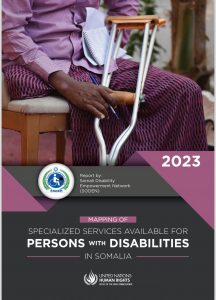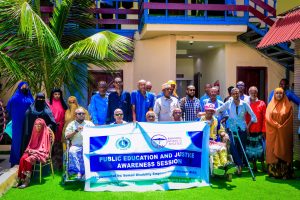Each year the UN announces a theme. The theme for 2016 is: Achieving 17 Goals for the Future We Want, which draws attention to the 17 Sustainable Development Goals and how these goals can create a more inclusive and equitable world for persons with disabilities.
Disability Day, or the International Day of People with Disability, is a day that has been promoted by the United Nations since 1992. The aim of Disability Day is to encourage a better understanding of people affected by a disability, together with helping to make people more aware of the rights, dignity and welfare of disabled people, as well as raise awareness about the benefits of integrating disabled persons into every aspect of life, from economic, to political, to social and cultural. Disability Day is not concerned exclusively with either mental or physical disabilities, but rather encompasses all known disabilities, from Autism to Down Syndrome to Multiple Sclerosis.
The History of Disability Day
Everything started in 1976, when the United Nations General Assembly made the decision that 1981 should be the International Year of Disabled Persons. The 5 years between the making of that decision and the actual Year of Disabled Persons were spent contemplating the hardships of the disabled, how the opportunities of the disabled could be equalized, and how to ensure the disabled take part fully in community life enjoying all of the rights and benefits non-disabled citizens have. Another issue that was touched on was how world governments could go about preventing disabilities from touching people in the first place, so much of the talk was about the viruses and other illnesses that lead to various kinds of disability. The decade between 1983 and 1992 was later proclaimed the United Nations Decade of Disabled Persons, and during that time, all of the concepts previously created became parts of one long process that was implemented in order to improve the lives of disabled persons the world over.
How to Celebrate Disability Day
Each year since 1992, a variety of events are held in many countries. Disability Day is used for holding discussions, forums and campaigns relating to disability, and communities are encouraged to organize meeting, talks, and even performances in their local areas. These can range from hosting a musical to a play, with disabled people being involved in these productions. The overall aim is to show non-disabled people that a person with a disability can be a vibrant member of society, as it happens that the entirely healthy are not always quite aware of this fact, which can lead to different kinds of discrimination of varying degrees of severity. The disabled, on the other hand, benefit from such performances by proving to themselves that there are many things they can still do, despite their conditions, which can help with their self-esteem and avoid mental issues such as depression from plaguing them. In general, these kinds of events are meant to challenge and them get rid of various stereotypes so that disabled people can enjoy lives free of discrimination and additional hardship.
Each year the day is celebrated there is an emphasis on a new aspect related to improving the lives of people living with a disability. In 2007, for example, the theme of the year was: “Decent Work for Persons with Disabilities”. In 2013, last year, it was “Break Barriers, Open Doors: for an inclusive society and development for all”, a call to help disabled people live in an inclusive society in every country, and to make sure that society was as accessible as possible for disabled people in all of its aspects, from making sure buildings are wheelchair accessible to installing braille on elevator buttons.





